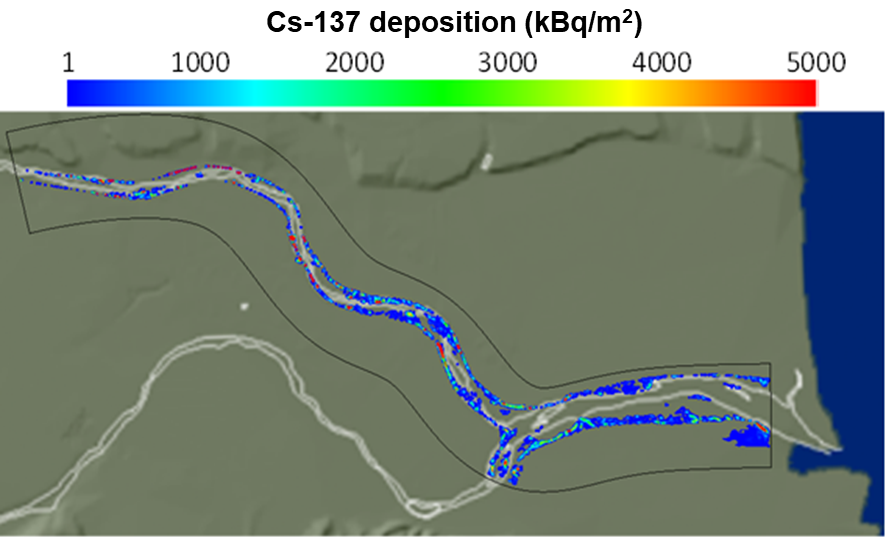Radioactivity Dynamics in River System
(2017)
QWhich parts of the river is radioactive cesium more likely to accumulate? 【Example of analysis】
AObservations show that sediment contaminated with radioactive cesium is accumulated in large amounts on downstream dry riverbeds and that the distribution of such sediment is uneven.
We performed a simulation to understand the mechanism of this phenomena and reproduced the tendency that radioactive cesium is more likely to accumulate in curved parts of the river.
-

Fig.1 Air dose rates measured by a remote-controlled helicopter in 2013
-

Fig.2 Estimated 137Cs deposition at the time of the September 2015 typhoon, based on simulation
- The distribution of radioactive cesium deposited in soils on dry riverbeds was analyzed by 2D simulation.
- The tendency that radioactive cesium is more likely to accumulate in curved parts of rivers was reproduced.
(As of 2020, cesium concentrations in soils deposited on dry riverbeds are low, and air dose rates in such places are decreasing.
→ See “Q. Do dose rates in riverbeds increase after heavy rains? 【Tendency of the change air dose rate】”)
Related articles
- Does forest type (deciduous broad-leaf forests or cedar forests) affect the dynamics of radioactive Cs?
- How does the distribution of radioactive cesium concentrations in forests change over time? 【Example of analysis】
- How much amount of radiocesium discharges into the ocean?
- Dose the radiocesium discharge ratio from rivers depend on the local environment?
- Where is the radiocesium in river water coming from?
